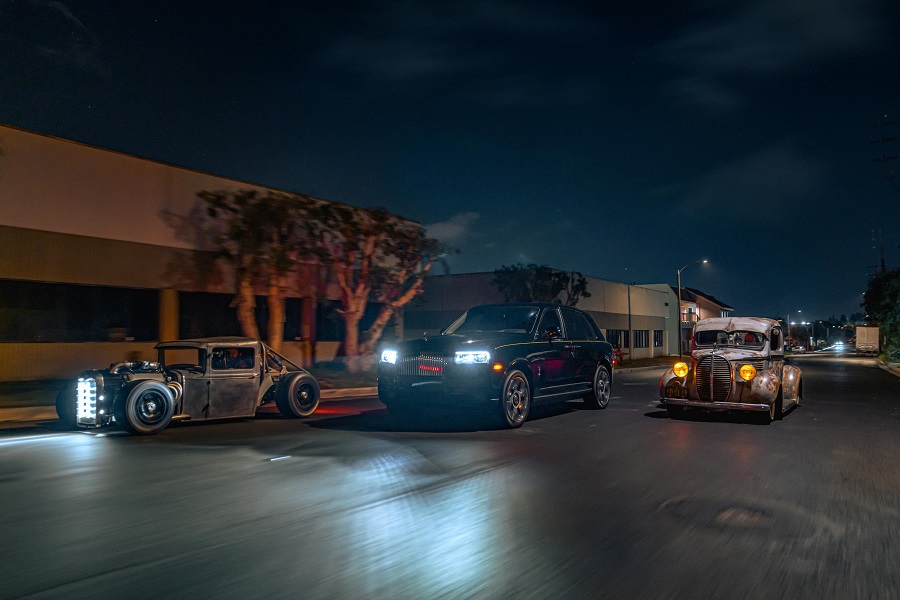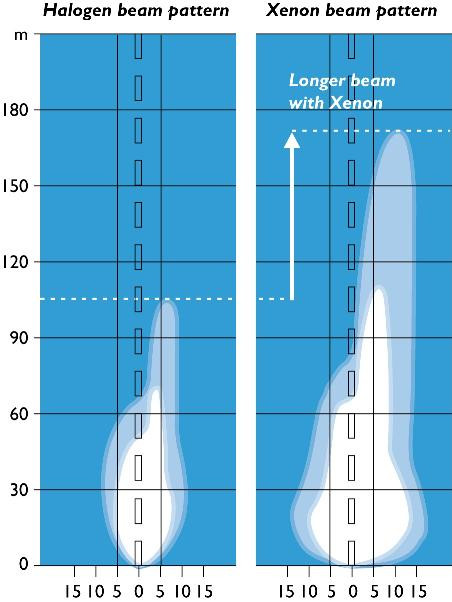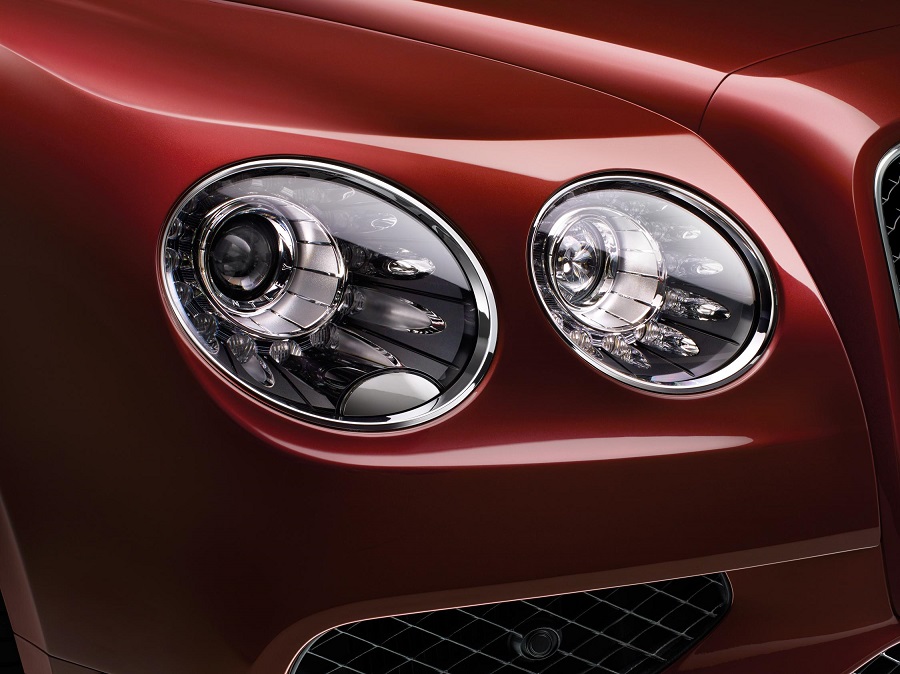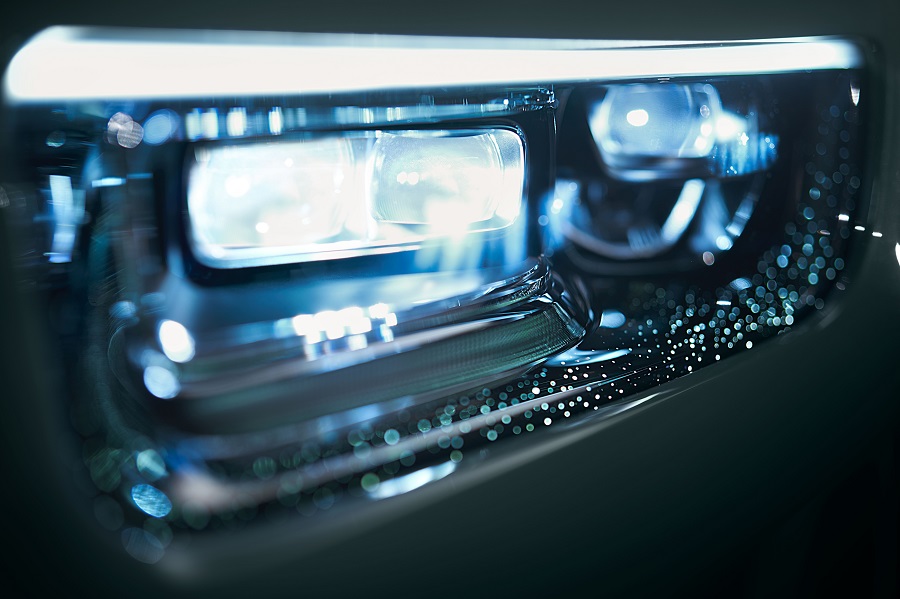HID lights, or ‘Xenons’, were all the rage a few years ago, and they’re still pretty neat now. Here’s all you need to know about them.
Car headlights are pieces of technology which plenty of automotive enthusiasts don’t really pay much attention to, despite it forming a part of your routine car maintenance. But when you think about it, that’s a bit odd, considering that headlights can have a big impact on not only your car’s style, but also its ‘quality of life’ factor.
If you haven’t got them as standard, one way to upgrade your car’s headlights is to swap them out for a set of HID lights. HID stands for High-Intensity Discharge, and while that might sound like something you’d find in one of the raunchier corners of the internet, all it really means is that these lights utilize bulbs which shine brighter than average. So how does it work?

How do HID Lights Work?
The key to HID lights is the gas that you’ll find within them. Namely, HIDs create light by sending electricity between two electrodes surrounded by xenon gas, hence the ‘xenons’ nickname. This electricity excites the gas’ molecules, which in turn creates light that the bulb then projects outwards in front of the car.
This xenon gas takes the place of the halogen that you’ll find in most standard car headlights, but it’s not quite as simple as a quick switch of chemicals. There are actually a few key differences in how HID lights operate versus halogen ones, such as the fact that they require a higher voltage to get going. To achieve this, HID lights have their own voltage regulator. On top of that, whereas electricity runs through a tungsten filament in halogen lights, the xenon gas in HIDs faces direct exposure. Over a long period of time this can actually ‘wear down’ the xenon gas, resulting in gradually dimmer headlights. That said, HIDs have a lifespan of thousands of hours and aren’t susceptible to breaking from harsh conditions, making them more durable than filament-dependent halogens which can simply break or burst.

Benefits of HID Lights
There are a multitude of reasons why people consider HID lights as an upgrade over halogen. For a start, they’re more powerful, so you can see better and further into the night. Then, there’s the issue of aesthetics. HIDs can vary in hue, but generally they’re associated with a whiter, crisper form of light, which many people consider more appealing than the traditional yellowish tint of halogens. Though, drivers in oncoming cars may find your HID lights distracting or annoying as the piercingly powerful white light can dazzle them and affect their own vision of the road ahead, especially if incorrectly fitted.
Impressively, HIDs can provide this greater level of power while consuming less energy than halogens too, which further down the chain equates to a slight reduction in fuel use.

Types of HID Lights
Normal HID lights make use of two separate bulbs; one for your car’s high beams, and one for its low beams. However, you’ll only find that important xenon gas in the low beams – the main/high beams remain halogen-equipped.
The next step up from that combination is a bi-xenon configuration. Instead of using two individual bulbs, this makes use of just a single xenon bulb to emit both the car’s high and low beams. To achieve this, bi-xenons incorporate more moving parts than standard HIDs, which in turn hikes the price up a bit. And, although there are plenty of high quality options out there, the more moving parts you add, the more vulnerable a system is to failure. It’s up to you whether you think the results are worth the extra expense.
Is it illegal to upgrade your headlights?
Another thing to keep in mind is that different regions have different laws about headlight modifications. In the US, it wasn’t until 1997 that H1 bulbs were made legal. In 2014, when Audi introduced Matrix LED Headlights, cars sold in the US didn’t come equipped with them as they weren’t legal at the time. As of 2022, new federal laws meant that OEM headlights could feature the latest technology, but that doesn’t mean you can upgrade to LED lights if your car wasn’t fitted with them from factory. In fact, it doesn’t matter if you want HID, halogen or whatever, if your car didn’t have them from factory, it’s illegal to upgrade to them.
In the UK, it is illegal to simply swap out halogen bulbs for xenon ones. If you want to make that upgrade, you need to replace the entire headlight housing for a HID-intended system.
HIDs aren’t the only way to upgrade your car’s headlights either. LEDs are another common choice, so check out this article next to weigh up the pros and cons of each.





